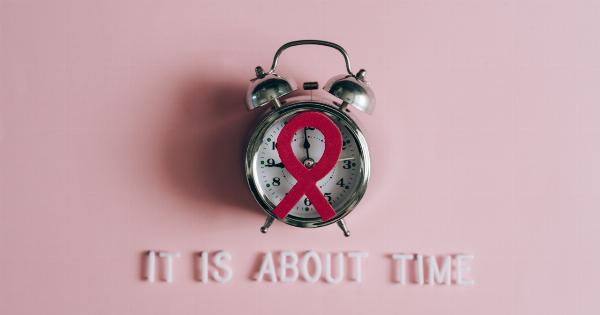World AIDS Day is observed on December 1st every year to raise awareness about HIV/AIDS, commemorate those who have lost their lives to the disease, and support those living with it.
HIV (Human Immunodeficiency Virus) weakens the immune system, making individuals more susceptible to infections and diseases. AIDS (Acquired Immunodeficiency Syndrome) is the final stage of HIV infection, characterized by severe immune system damage.
1. Understanding HIV Transmission and Prevention
It is essential to educate people about how HIV is transmitted and how to protect themselves from getting infected. HIV primarily spreads through certain body fluids, such as blood, semen, vaginal fluids, and breast milk.
Unprotected sexual intercourse, sharing needles, mother-to-child transmission during childbirth or breastfeeding, and blood transfusions (in some cases) are common modes of transmission.
Prevention strategies include practicing safe sex, using condoms, getting tested regularly, and avoiding sharing needles or other drug paraphernalia.
Pre-exposure prophylaxis (PrEP) is a preventive medication for individuals at high risk of contracting HIV.
2. HIV Testing and Early Diagnosis
Early diagnosis is crucial for managing HIV effectively. Regular testing is vital, especially for individuals engaging in high-risk behaviors. Various testing options are available, including rapid HIV tests that deliver results within minutes.
Confidentiality and support play essential roles in encouraging people to get tested.
Early diagnosis allows people living with HIV to access life-saving treatment, prevent further transmission, and manage their health appropriately.
It is essential to spread awareness about testing facilities, reduce stigma associated with HIV testing, and encourage regular screenings for everyone.
3. HIV Treatment and Antiretroviral Therapy (ART)
Advancements in medical science have revolutionized HIV treatment over the years. Antiretroviral therapy (ART) is the standard treatment for HIV infection.
ART involves a combination of medications that help control the virus, improve immune function, and reduce the risk of transmission. The treatment regimen varies for individuals based on their specific needs and stage of HIV infection.
Ensuring access to affordable and quality HIV treatment is crucial, particularly in regions where resources are limited. Governments, healthcare providers, and organizations must work together to make ART available to all those in need.
4. Managing HIV-Related Stigma and Discrimination
HIV-related stigma and discrimination continue to be significant barriers in the fight against the disease. Negative attitudes, misconceptions, and fear often lead to social ostracization of individuals living with HIV/AIDS.
Discrimination can prevent people from seeking testing, treatment, and support, thus hindering effective HIV prevention and care efforts.
Creating safe and inclusive environments is essential to address stigma and discrimination. Education, awareness campaigns, and sensitization programs can help dispel myths and misconceptions surrounding HIV/AIDS, fostering empathy and understanding.
5. Supporting Mental Health and Well-being
HIV/AIDS can have a significant impact on mental health and overall well-being.
The emotional and psychological burden of living with the disease, societal stigma, and fear of judgment can contribute to anxiety, depression, and other mental health challenges.
Providing comprehensive support systems, including mental health services, counseling, and support groups, is crucial for individuals living with HIV/AIDS.
Recognizing the importance of mental health in overall well-being is vital for effective HIV care and management.
6. Addressing HIV Among Key Affected Populations
Certain populations are disproportionately affected by HIV/AIDS, including sex workers, men who have sex with men, people who inject drugs, transgender individuals, and prisoners.
Tailored interventions and targeted prevention strategies are necessary to address the specific needs and vulnerabilities of these key populations.
Efforts should be made to reduce barriers to healthcare access, provide accurate information, and empower these populations to protect themselves from HIV.
Implementing harm reduction programs, promoting condom use, ensuring needle exchange programs, and advocating for their rights are vital steps toward achieving an HIV-free world for all.
7. Global Collaboration and Funding for HIV/AIDS Programs
Tackling HIV/AIDS requires global collaboration and sustained funding. Governments, international organizations, non-profit entities, and communities must work together to combat the disease effectively.
Sharing resources, best practices, and research findings can improve prevention efforts, access to treatment, and overall HIV care.
Donors, both public and private, play a crucial role in funding initiatives that support HIV/AIDS research, prevention, and treatment programs.
Investing in research and development of new medications, vaccines, and innovative technologies can accelerate progress in combating HIV globally.































